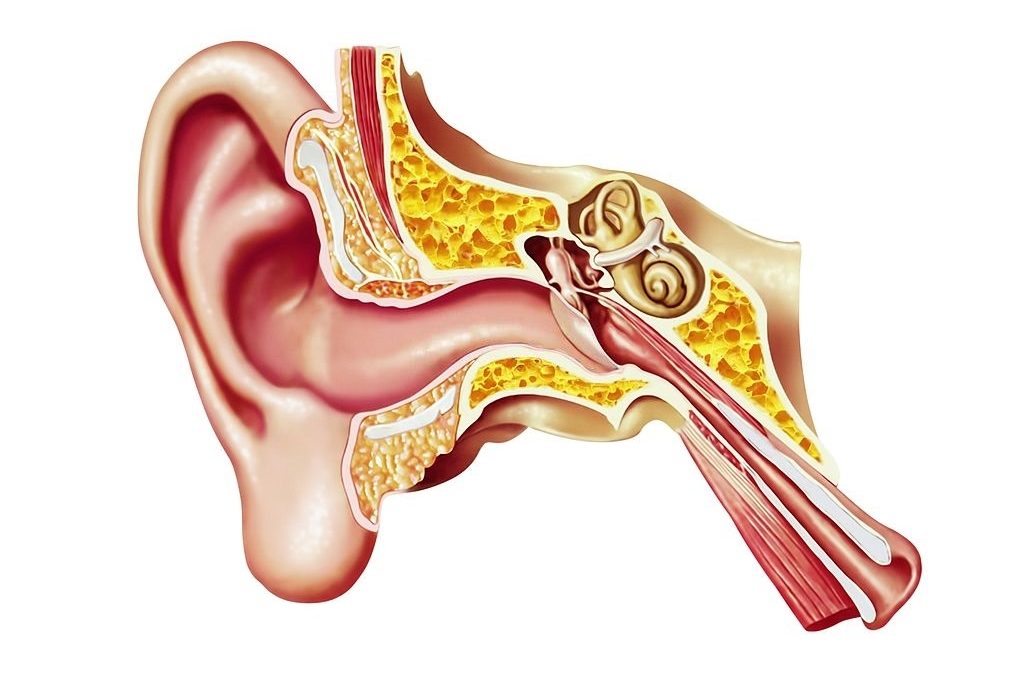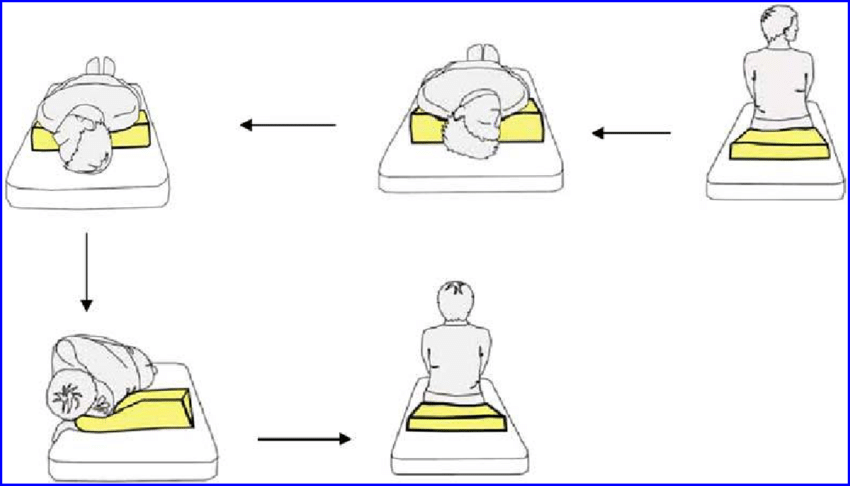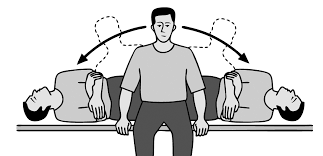The ear works in conjunction with our vision and nervous system as they can influence our sense of balance. People with vertigo can develop new movement patterns to compensate for the loss of balance.
For example, a person may adopt restricting his neck movement and may turn his entire body instead of turning only the head to look at something.
Vertigo can result in other symptoms such as headache, neck ache, muscle stiffness, general fatigue, and, if not altered, can worsen the symptoms.
The most common type of this condition is benign paroxysmal positional vertigo (BPPV). BPPV occurs when small crystals of calcium get lost in the inner ear.
The effect can be felt when getting in or out of bed or tilting the head up. BPPV affects mostly people over 60 years of age, and it is also the easiest type of vertigo to treat.
Here are ways you can rebalance your inner ear.
1. The Epley Maneuver
- Sit on the edge of your bed and turn your head gently and slightly to the side that you suspect the vertigo is coming from. Then place a pillow behind you on the bed.
- Lie down quickly on your back with your shoulders coming to rest on the pillow while your head is reclined.
- Maintain your head turn and wait for 30 seconds. Turn your head gently and slightly in the opposite direction and hold on for another 30 seconds.
- Gently turn your head as far as you can in that direction and into the bed, if possible. Hold on for another 30 seconds and then sit up on that side.
Repeat this three times daily until your vertigo is gone.
2. The Semont Maneuver
If the Epley Maneuver doesn’t work, then you can move on to the Semont. It is similar but a bit more physically intensive.
- Sit on the edge of your bed and slightly turn your head in the opposite direction that you feel the vertigo is coming from.
- Lie down quickly on the opposite side of your body in which your head is turned and wait for 2-3 minutes.
- Flip over quickly and lie down on your other side, still maintaining the position of your head. Hold on for another 30 seconds and return to a sitting position slowly.
Repeat these three times daily.
3. The Foster Maneuver
This is also known as “the half somersault.” This does not have anything to do with the ear calcium crystals anymore, and it is a way of actively improving your balance, as well as getting rid of any type of vertigo.
- Kneel on the floor, then look up at the ceiling.
- With your arms outstretched, lower your head to the floor and tuck your chin between your knees. Hold on for 30 seconds.
- Turn your head in the direction of the affected ear and hold on for another 30 seconds.
- Get on all fours, and then raise your head quickly, so it’s level with your back. Maintain your head turn and hold on for 30 seconds.
- Raise your head quickly towards the ceiling while still maintaining your turn while standing up slowly.
A single session (containing a few repetitions) a day to get the full benefit is needed.
4. The Brandt-Daroff Exercise
This is a slight variation on the Foster Maneuver in case Foster isn’t yielding for you.
- Start in an upright position, the seated position, and then quickly lie down on one side with your head tilted at a 45-degree angle.
- Remain in this position until vertigo eases.
- Then move back into a seated position and repeat on the other side.
Perform the Brandt-Daroff exercise at least twice per day (with multiple repetitions) until you no longer feel any vertigo.
5. Vestibular Rehabilitation
This is the only method that you can’t do at home as vestibular rehabilitation involves professional and strict management. For those who live locally, an ear specialist will help you in his clinic and also possibly prescribe some follow up exercises at home.
Some of the home exercises your doctor could recommend are: Habituation exercise and gaze stabilization
6. Habituation Exercise
The patient suffering from vertigo identifies the action or actions that trigger their vertigo. In a controlled and safe environment with lots of soft surface coverings, the patient triggers their vertigo.
Theoretically, the patient does it enough to overexpose his brains to the vertigo sensation. The brain will build up a tolerance for this feeling in time and will be able to ignore it slowly.
7. Gaze Stabilization
This is another common exercise found in vestibular rehabilitation programs. This technique requires the patient to fixate his eyes on an object while moving his head in different directions.
This method uses vision and somatosensation (sense of touch) to exercise a damaged inner ear system.
In a Nutshell
Generally, if you are struggling with vertigo or balance problems, the culprit might be your inner ears. Some of these exercises may help but seeing an ear specialist is highly recommended. Visit our ear specialists across multiple branches in Malaysia to find out more.




